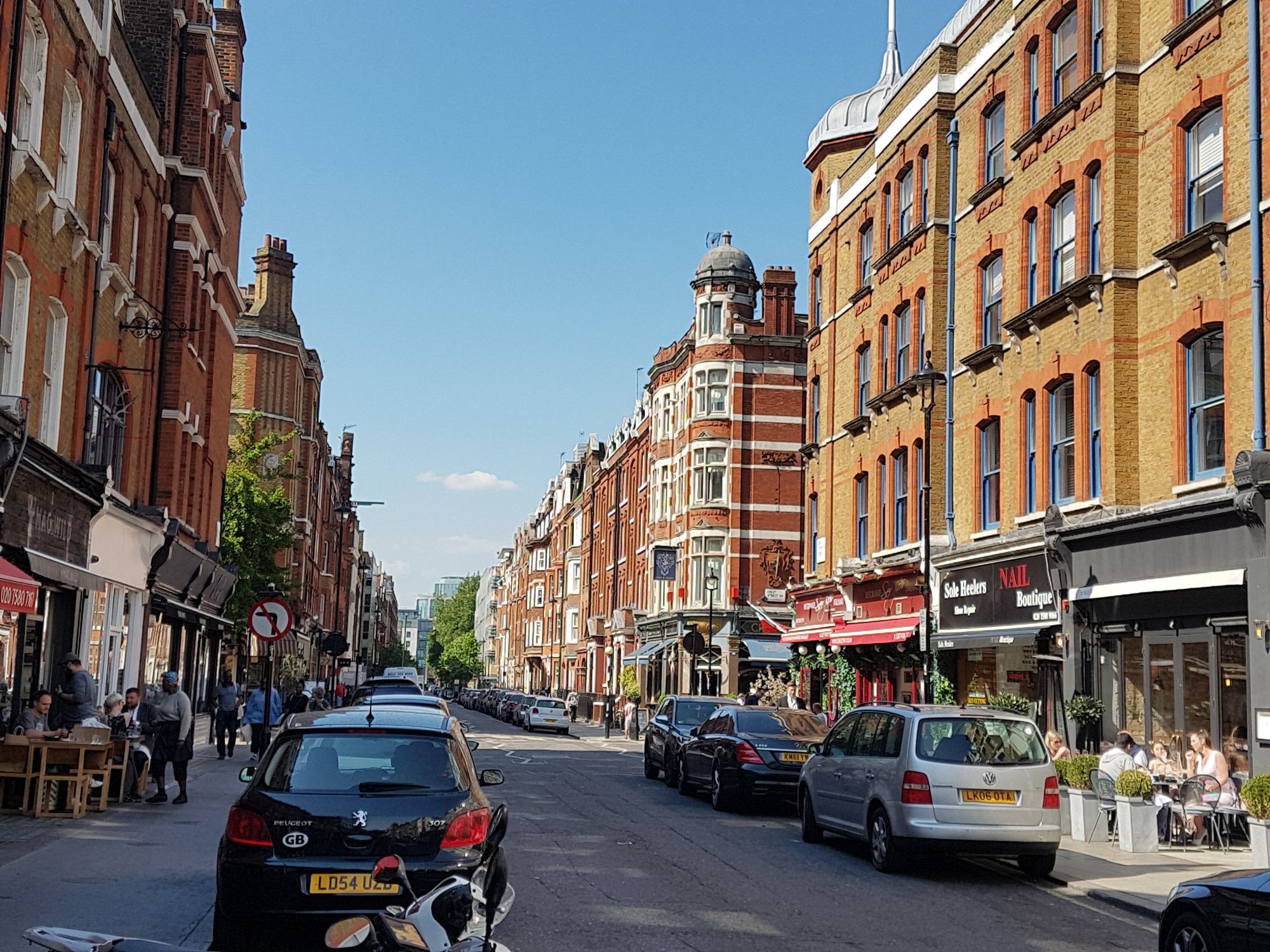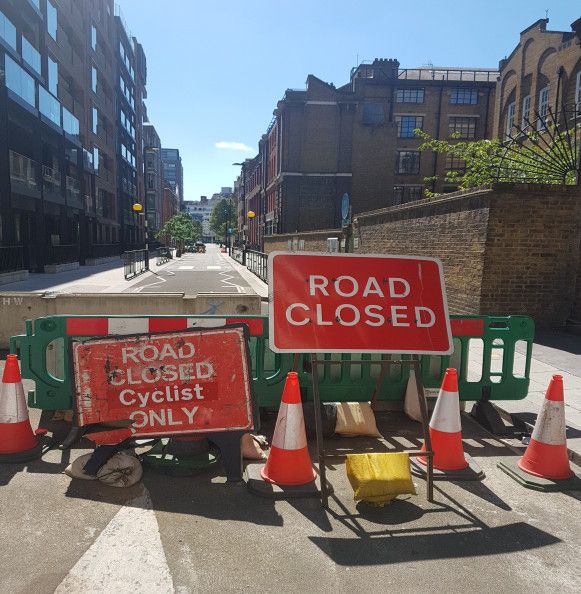Fitzrovia West promotes healthy streets through its Neighbourhood Plan
Westminster Healthy Streets is joining others in voicing a major concern that as lockdown eases, Westminster City Council must act now on Fitzrovia.

Fitzrovia is a densely developed urban village lying to the north of Oxford Street and straddling the Camden – Westminster borough boundary. It is made up of a diverse mix of residential, business and cultural uses with a long history as a destination for restaurants, bars and cafes. It is based on a grid of streets almost all of which are heavily congested with through traffic, deliveries and parked cars. While the pandemic has caused almost all commercial activity to cease, there have been indirect benefits to residents in that there is less traffic and greatly improved air quality. For example, according to the City Council, the level of pollutants was reduced by almost half in the eastern end of Oxford Street during lockdown.
That part of Fitzrovia lying in Westminster is represented by a business forum that has prepared a Neighbourhood Plan which is the subject of public consultation from 26 May for 10 weeks.
The Plan strongly supports the principle of creating Healthy Streets and wherever possible restricting through traffic to surrounding main roads such as Portland Place, Marylebone Road and Oxford Street. Within this ‘super-block’ there would then be a hierarchy of streets carrying different levels of traffic mainly with an origin or destination in the area. Some of the narrower, mainly residential streets would then be converted to genuinely healthy streets with trees, planting and paved sitting and play areas. The latter are particularly important because Fitzrovia West is designated as an area deficient in both open space and play space. The only available open spaces are small, privately owned courtyards such as Fitzroy Place and Rathbone Square. We are also advocating much more provision of secure parking for bicycles and wider pavements and improved crossings for pedestrians.
In preparing the neighbourhood plan, the Forum commissioned a ‘green strategy’ from consultants Urban Movement who undertook a study of traffic movement in the area based on the super-block principle. They identified six locations where sections of street could be closed off and relandscaped to provide much needed public open space. These examples have been included in the Plan and the Forum is campaigning for these to be implemented by Westminster City Council. Two schemes are already planned: The closure of a section of Riding House Street next to All Souls’ primary school and some CIL funding has been contributed to the improvement of Market Place, just to the north of Oxford Street.

As part of the lifting of lockdown, the Fitzrovia Neighbourhood Association (FNA) has called on Camden and Westminster councils to make the whole of Fitzrovia a Low Traffic Neighbourhood (LTN), in line with the Mayor of London’s Streetspace plans designed to facilitate social distancing, and enable walking and cycling.
The FNA, supported by the Forum, has asked for both the Camden and Westminster sides of Fitzrovia to be considered together as a single LTN. The neighbourhood is about one square kilometre and is ideal for the installation of modal filters as set out in the Streetspace Interim Guidance to Boroughs.
The Neighbourhood Plan also advocates the improvement of air quality by rationalising the delivery of goods to residents and businesses by establishing distribution hubs and greater use of electric vehicles with more charge points. The New West End Company has experimented with this but it needs Council support. The Forum has always supported maintaining Oxford Street as the main distributor for buses, taxis and essential goods vehicles because full or partial closure would inevitably displace these vehicles onto surrounding streets, thus further reducing air quality.
Fitzrovia West is already a ’15 minute neighbourhood’ (as in Paris) where at least 70% of the population walk or cycle and don’t own cars. As well as improving the quality of life on the street, the plan aims to sustain the community through the greater provision of affordable housing, encouraging development which respects the character and heritage of the area, protecting shops and street frontages, enhancing the range of services and facilities, and enabling businesses of all sizes to thrive.